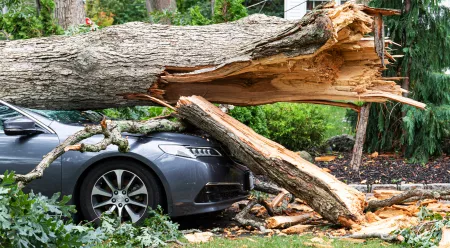If you recently started looking for home insurance for the first time, you’re probably feeling a little overwhelmed.
We don’t blame you.
We know precisely how tricky finding the right home insurance policy can be, especially if it’s your first time purchasing a new home. We receive countless questions from confused policyholders, ranging from “what are the different types of home insurance in Canada?” to “broad vs comprehensive home insurance — what are the differences between the two options?”.
That’s why we’ve put together this article — to help you learn about home insurance in Canada.
In today’s article, we’ll be assessing the differences between broad coverage and comprehensive home insurance in Canada. We’ll also help you decide which option is right for you and your family.
START A QUOTE
Is the grass looking greener on the other side? Chat with Surex about re-shopping your home insurance policy
Whether you’re looking for comprehensive coverage, broad form property insurance, or anything in between, the Surex team is here to help. We can guide you through the entire policy-buying process and answer any questions you have along the way. Not to mention, when it comes to home insurance quotes, we’ve got you covered (a little insurance humour).
Our team of top-notch insurance advisors can provide you with over ten competitive, personalized home insurance quotes in ten minutes or less!
Need to see it to believe it? Contact a Surex insurance advisor to take your first step toward cheaper home insurance.
What’s the difference between broad and comprehensive home insurance in Canada?
Before tackling the comprehensive vs broad home insurance debate, we need to figure out what they are.
What is comprehensive home insurance in Canada?
Comprehensive home insurance is the ideal option for homeowners that want reliable, well-rounded coverage.
What makes comprehensive home insurance so unique? For starters, it protects your home and contents from a long list of risks and perils (an insurance term for unforeseeable events, like a natural disaster).
Some examples of risk and perils include:
- Fire and smoke damage
- Wind damage
- Ice or hail damage
- Burst pipes (depending on the context of the event)
- Falling objects (tree branches, aircraft parts, etc.)
- Theft and burglaries
- Vandalism
If one of the events mentioned above damages your property or your belongings, your home insurance provider will cover the repair or replacement costs.
Here’s a brief example:
One of your pipes freezes on a particularly cold winter day, eventually leading to a serious crack. The crack goes unnoticed until it starts to leak and damages your hardwood flooring, furniture, and appliances. If you have comprehensive home insurance, your provider will cover all or a portion of the repair and/or replacement costs related to your property and belongings. *Subject to circumstances*
What is broad form home coverage in Canada?
Broad form insurance is an excellent alternative to comprehensive home coverage, due to the fact that it offers homeowners in Canada a respectable amount of flexibility without a hefty price tag.
You’re likely wondering how broad form home insurance offers homeowners flexibility. For starters, broad-form home coverage is noticeably cheaper than comprehensive coverage. This is due to the fact that broad form home coverage provides comprehensive coverage for your home and named perils coverage for the contents.
Feeling confused? Let’s rewind to our previous example:
After noticing water damage in your home, you contact your insurance provider. If you have broad form home coverage, your provider will cover the cost of the pipe replacement, the hardwood flooring, and other similar expenses. However, your insurance provider will only cover the repair or replacement cost of your furniture or appliance if the damages were caused by a peril named in your policy.
Unlike other forms of coverage (like named-perils insurance), broad-form home coverage protects your home from all of the same risks and perils as comprehensive coverage. This means you can get an extensive amount of coverage at a lower rate.
Please remember that broad-form home coverage does not protect you from risks and perils that aren’t clearly named in the policy.
Please remember that a broad form home coverage protects your contents from the listed perils only, but the building from all perils other than the exclusions listed below:
Are there any risks and perils that aren’t included in broad form or comprehensive home coverage in Canada?
Excellent question! Yes, there are a handful of risks and perils that aren’t covered by either option (in most cases).
Some examples include:
- Overland water damage
- Earthquake damage
- Avalanche damage
- Damage caused by acts of terrorism
- Damage caused by acts of war
- Sewer backup damage
Most home insurance providers do not automatically include these risks and perils in their broad or comprehensive home coverage options because they rarely occur in Canada.
If you’d like to protect your property from one of these risks or perils, you can talk to your insurance advisor about getting an endorsement (also known as an insurance add-on).
Broad home coverage vs comprehensive home insurance: what’s the better option?
Now that we know the differences between broad home coverage and comprehensive home insurance, we can figure out which option is right for you.
In most cases, comprehensive home insurance is the right choice for homeowners that have high-value homes that are full of expensive items such as artwork, collectibles, antiques, etc. If something happens to your home, you want to ensure that these valuables are sufficiently covered.
On the other hand, broad form home coverage is a fantastic choice for young homeowners that want to protect their home but haven’t accumulated enough valuables to justify the additional cost that comes with comprehensive home coverage.
For instance, if you own a valuable home but haven’t invested in furnishings, entertainment systems or appliances, broad form home coverage is a great choice. Once you acquire a few valuables you want to protect, you can chat with your insurance advisor about switching to comprehensive coverage.
So, at the end of the day, we’d have to say that neither comprehensive or broad form home coverage are necessarily better — the choice you make comes down to your preferences and current needs.
Want to learn more about the various types of home insurance in Canada?
If you’re the type of homeowner that loves to learn about insurance, you’ve come to the right place. You can find the answer to any insurance question you have by scrolling through our blog or chatting with your Surex insurance advisor.



